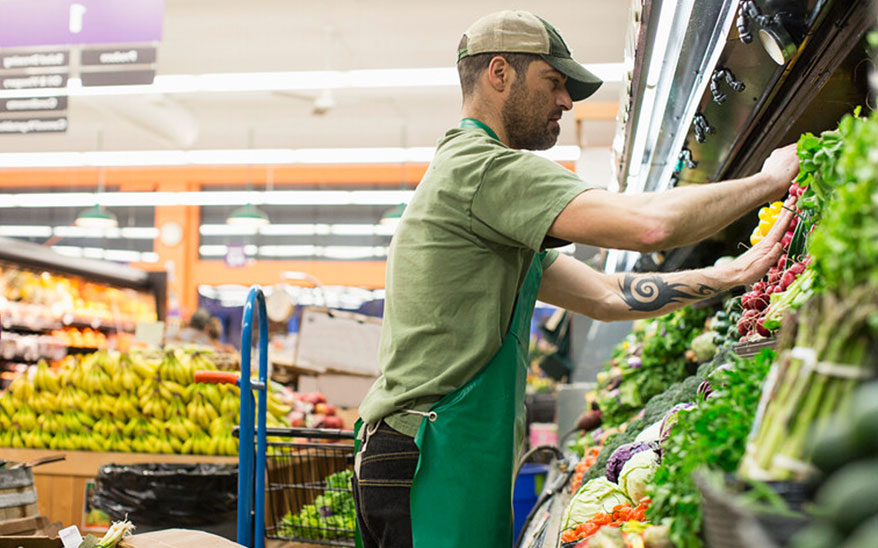The Future of Point of Sale
- May 26, 2022
- By Manhattan Staff

The traditional buyer’s journey is changing right before our eyes, with trends emerging from the post-pandemic retail world that are shaping the way consumers buy products now and for the foreseeable future.
Only a little over half of consumers (54%) globally say they feel safe shopping in-store today and nearly three-quarters of consumers in the US who’ve tried curbside pickup said that they will continue to do so.
Joe Kamara, one of Manhattan Associates’ solutions executives, agreed curbside pickup, along with ‘buy online, pickup in-store’ (BOPIS) - also known as ‘click & collect’ - are two of the many reasons why traditional retail store point of sale solutions (POS) has had to adapt.
In a conversation with Miya Knights, Publisher, RetailTechnology.co.uk, Kamara said this online-fueled demand is, as a result, spurring leading retailers to overhaul existing POS technology so they can harness three key, strategic omnichannel store capabilities in the future.
TREND #1: FLEXIBLE TRANSACTIONAL CAPABILITY
“Unified commerce means having a single view of inventory and customers,” said Kamara. “Today, transactions now equal orders plus sales. So, retailers must increasingly be able to process purchases that combine orders and sales from in-store and online transactions.”
This trend is having a profound impact on traditional retail POS systems: “One Manhattan retail client is using their physical POS for store endless aisle order capture, which is a capability they were able to quickly turn on, along with the ability to manage online returns.”
Legacy retail POS systems may be too inflexible to accommodate the new capabilities required to service new online-to-offline shopping journeys, such as curbside pickup and two-way customer communications. But Kamara added that today’s POS must also be able to tap into a central view of inventory to provide “commerce anywhere” services, such as pickup and ship-from-store.
Existing retail POS systems may be too inflexible to accommodate the new capabilities required to service new online-to-offline shopping journeys, such as curbside pickup and two-way customer communications. But Kamara added that today’s POS must also be able to tap into a central view of inventory to provide “commerce anywhere” services, such as pickup and ship-from-store.
TREND #2: ENTERPRISE VIEW OF CUSTOMERS
Offering “commerce anywhere” services also requires an enterprise view of customers, which can include their purchase history and loyalty entitlements.
For example, Manhattan currently supplies Lamps Plus, the largest specialty lighting retailer in the US, with a range of retail technology solutions including point of sale. The retailer uses the POS to unite selling, engagement, and fulfillment and delivers improved experiences through a single system of record for managing omnichannel customer interactions and transactions.
Here, Kamara explained how the advent of cloud-native software and microservices-based integration was making it easier for retailers to centralize data and manage functionality, off-POS.
“Minimizing the number of places data is processed is one of the first steps to POS replacement,” he added. “We can quickly deploy our POS on an iPad to run alongside an existing system, for example. The main thing is, it’s about building a customer-focused roadmap that includes how to efficiently retire existing technical debt, often accumulated over decades.”
TREND #3: GOING BEYOND POS
Kamara also highlighted how overcoming retail POS hardware limitations is an essential step to extending traditional POS capability beyond the transaction, supported by centralized customer and inventory visibility.
“One of our differentiators is having an out-of-the-box POS with a cloud-native customer order management engine to deliver a truly unified commerce platform,” he said.
Then a retailer only needs to choose what POS functionality to turn on: be it checking the status of an order or an endless aisle capability that enables store staff to ‘save the sale’ on products that are not in stock at a particular location.
These kinds of services are becoming all the more important where retailers are trying to entice reluctant shoppers back into stores. In fact, one survey by Business Insider Intelligence - conducted even before the pandemic accelerated online growth - found 85% of US shoppers were already making additional in-store purchases while picking up online orders. So, the opportunity is clear.
BUILDING POS FLEXIBILITY AND RESILIENCE
Kamara added that, in order to take advantage of these consumer-led trends, retailers should be asking: “What customer experience do we desire and how open is our system’s architecture to support it? Modern POS is the anchor for unified commerce, where it may have a view of data not traditionally owned by the POS, like online purchase history and loyalty, as examples.”
He concluded by urging retailers of all sizes to reevaluate their existing store POS capabilities and develop a future state roadmap focused on desired customer experiences. Ensuring the store POS is capable of handling orders and sales, managing inventory, and customer-facing functionality (including loyalty, promotions, or clienteling) will help retailers stay ahead of trends, regardless of what might happen in the future to shape them.
You can find out more about Manhattan Associates’ POS solutions here.





